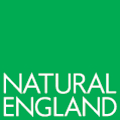What happens to a bird I send in?
What do I do if the bird has a ring on its leg?
Should I submit a bird that hasn’t been poisoned?
What happens to eggs sent in by licensed collectors?
Why are we interested in these chemicals?
Found a dead otter? Please contact the Otter Project, Cardiff University. Found other roadkill? Please report to Project Splatter- creating a UK map of wildlife roadkill.
What happens to a bird I send in?
After a bird has been received by the PBMS it is digitally logged into the system and then stored in a -18 degrees Centrigrade freezer until selected for post mortem. The post mortem tecnician removes the bird from the freezer and allows the bird to thoroughly defrost. A post mortem is carried out and numerous measurements are recorded on a database including the age and sex of the bird and any sign of injury or disease. Samples are taken, weighed and stored in preparation for chemical analysis to take place.
What do I do if the bird has a ring on its leg?
If a bird has a ring on its leg you may wish to report the ring number to the British Trust for Ornithology (BTO).
Should I submit a bird that hasn’t been poisoned?
Yes please! The aim of the PBMS is to monitor the levels of contaminants in the populations of predatory birds as a whole, not just those birds thought to have been poisoned. In fact the majority of birds we receive are thought to have died due to natural causes (e.g. starvation) or accidental deaths (e.g. hit by road vehicles).
What happens to eggs sent in by licensed collectors?
Addled and deserted eggs are weighed, cracked and the contents homogenised prior to storage at -18 degrees Centrigrade. The egg shell is examined and the thickness measured. Egg shells are often sent to Museum collections. Any sign of embryo development is recorded. Egg contents undergo chemical analysis at the CEH Analytical Chemistry Facility.
Which species are analysed?
The Predatory Bird Monitoring Scheme is currently collecting birds of prey of any kind. Current funding, however, only allows the analyses of Red kite, Sparrowhawk, Kestrel and Barn owl. Other species are analysed when time and funding permits; these include Tawny owl and Buzzard. Other predatory birds sent into the scheme that are fit for analysis are retained in a long term archive facility at CEH Lancaster.
Which chemicals are measured?
| Samples | Contaminants Analysed |
|---|---|
| Liver | |
| Barn Owl, Kestrel, Red Kite | Anticoagulant rodenticides |
| Sparrowhawk, Red kite | Lead |
| Otter | Metals, PBDEs |
| Other raptors | Tissues archived for future retrospective studies |
| Egg contents | |
| Gannet | PCBs, metals and OCs |
| Sparrowhawk | Decabromo-diphenyl ether |
| Other raptors | Egg contents/tissues archived |
Why are we interested in these chemicals?
Why are we monitoring these chemicals in predatory bird livers?
The chemicals monitored by the PBMS are those commonly used in rodenticides, flame retardants and other manufacturing processes. Some of these chemicals persist in the environment and bioaccumulate via the food chain to the organs of predatory species such as birds of prey and mammals.
Data generated by the scheme is used by governmental and non-governmental organisations to assess the risk that chemical contaminants pose to wildlife and potentially to human health, to develop our knowledge of the food-chain transfer and effects and to provide information on the need for, and the success of, mitigation measures. The PBMS contributes to national and international monitoring and risk assessment programmes and provides a scientific evidence base to inform regulatory decisions.
What feedback will I receive?
We send an acknowledgement letter after we have received a dead bird. The bird is unpacked, logged into a digital system and stored at -18 until a post mortem examination is carried out. Since we receive more than 400 birds per year, this may be some time after you have sent the bird to us. Once a post mortem has been completed you will receive detailed information and measurements regarding the bird you sent in including a probable cause of death.






